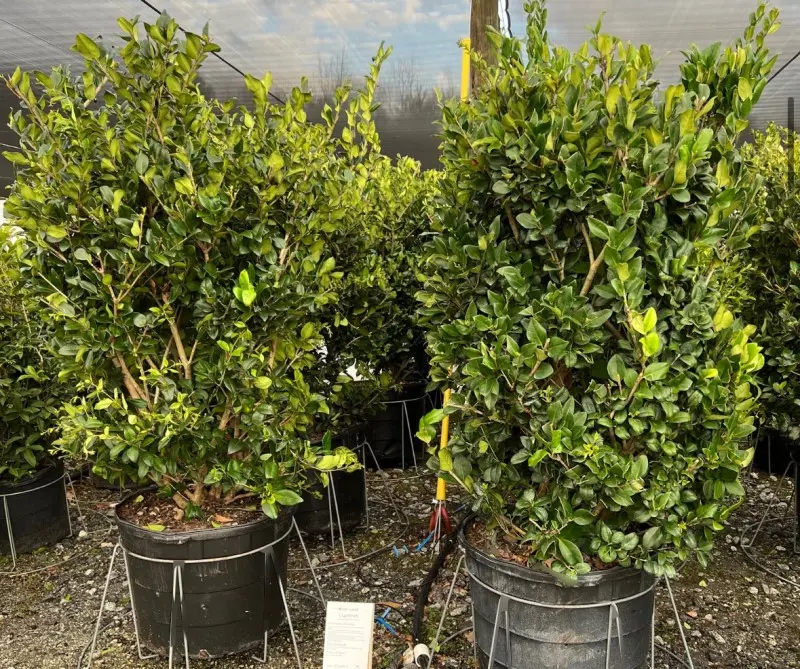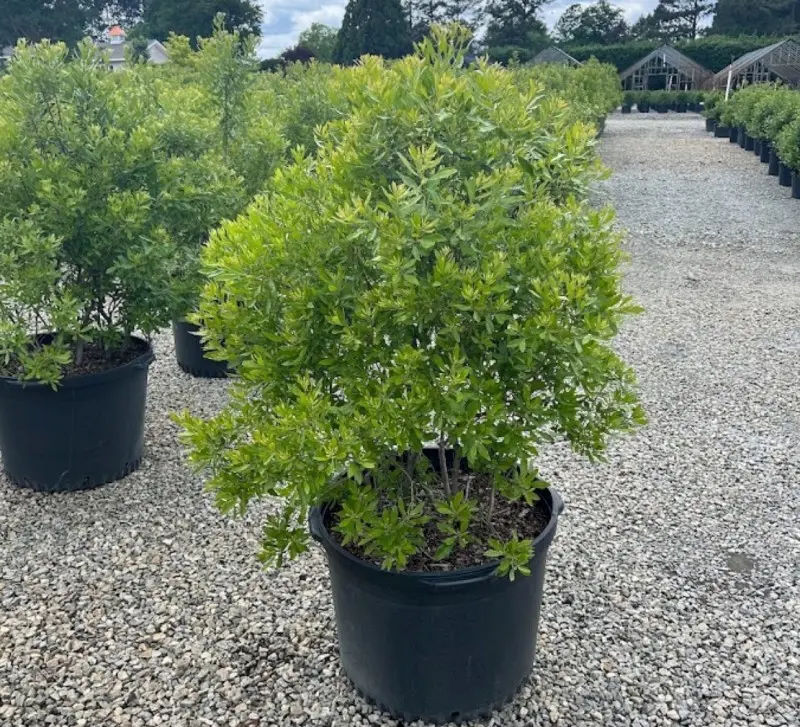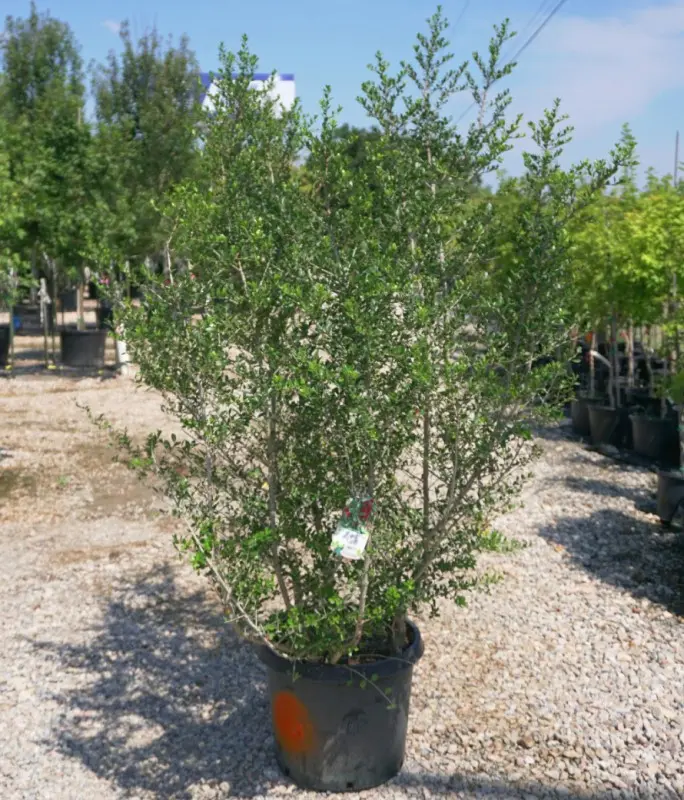Shrubs
“Wax Myrtle” has been added to your cart. View cart
Showing 33–35 of 35 results
-

Wax Leaf Ligustrum
$0.00Add to LawnFull sunPartial sun3'-10'Not deer resistantWax Leaf Ligustrum (Ligustrum japonicum), also known as Japanese Privet, is a hardy, evergreen shrub known for its glossy, dark green foliage and dense, upright growth habit. This shrub is popular for its durability and low-maintenance needs, often used as a hedge, privacy screen, or foundation plant. In late spring to early summer, Wax Leaf Ligustrum produces small, white, fragrant flowers in upright clusters, followed by small, bluish-black berries that attract birds in the fall. Wax Leaf Ligustrum typically grows 6 to 12 feet tall and 6 to 8 feet wide, though it can be pruned to maintain a smaller shape. Thriving in USDA zones 7-11, it performs well in full sun to partial shade and adapts easily to various soil types, as long as the soil is well-draining. This shrub is drought-tolerant once established and resistant to heat, humidity, and urban pollution, making it a reliable choice for tough landscape conditions. Low-maintenance by nature, Wax Leaf Ligustrum only requires occasional pruning to maintain its shape and size. It is pest-resistant and generally unbothered by deer, adding to its appeal for low-maintenance gardens. With its year-round foliage, seasonal blooms, and easy care, Wax Leaf Ligustrum is a versatile shrub that provides both structure and greenery, fitting well into formal hedges, naturalized borders, or as a standalone specimen in the landscape. -

Wax Myrtle
$0.00Add to LawnFull sunPartial sun6'-20'Not deer resistantWax Myrtle (Myrica cerifera), also known as Southern Wax Myrtle or Southern Bayberry, is a versatile, fast-growing evergreen shrub or small tree admired for its aromatic foliage and natural resilience. Native to the southeastern United States, Wax Myrtle has narrow, lance-shaped, olive-green leaves that emit a pleasant fragrance when crushed. In fall, female plants produce clusters of small, waxy, bluish-gray berries along the stems, which provide food for birds and wildlife throughout winter. The berries have historically been used to make bayberry candles due to their high wax content. Wax Myrtle can grow between 10 to 20 feet in height, with a similar spread, though it can be pruned to maintain a smaller size or shaped into a hedge. This shrub thrives in USDA zones 7-10 and is adaptable to a variety of soil types, including sandy, acidic, and poorly draining soils. Wax Myrtle is drought-tolerant once established and highly resistant to salt, making it well-suited for coastal landscapes and xeriscape gardens. It performs best in full sun to partial shade. Low-maintenance and pest-resistant, Wax Myrtle requires minimal pruning, though it can be trimmed in late winter or early spring to shape and control growth if used as a hedge or screen. It is also deer-resistant and helps with erosion control, making it a practical choice for naturalized settings, slopes, or privacy screens. With its fragrant foliage, wildlife-friendly berries, and tolerance to challenging conditions, Wax Myrtle is a valuable addition to both formal and informal landscapes, bringing beauty and functionality year-round. -

Yaupon Holly
$0.00Add to LawnFull sunPartial sun5'-15'Deer resistantYaupon Holly (Ilex vomitoria) is a versatile, evergreen shrub or small tree known for its dense foliage, adaptability, and attractive red berries. Native to the southeastern United States, Yaupon Holly features small, oval, glossy green leaves that remain vibrant year-round. In the spring, it produces small white flowers, and in the fall, female plants develop bright red berries that persist into winter, adding seasonal interest and providing food for birds and wildlife. Yaupon Holly is dioecious, meaning separate male and female plants are needed for berry production. Yaupon Holly typically grows 10 to 20 feet tall and 6 to 12 feet wide, though it can be pruned to maintain a smaller, shrub-like form or even shaped as a small tree. This plant thrives in full sun to partial shade and is hardy in USDA zones 7-10. Highly adaptable, Yaupon Holly tolerates various soil types—including clay, sand, and slightly acidic to alkaline soils—and is both drought- and salt-tolerant, making it suitable for coastal or arid landscapes. Low-maintenance and resilient, Yaupon Holly requires only occasional pruning to maintain shape, especially when grown as a hedge or topiary. Its dense foliage and hardiness against pests and diseases make it popular for privacy screens, natural hedges, or foundation plantings. Whether used as a specimen plant, hedge, or tree form, Yaupon Holly adds year-round greenery, structure, and seasonal color to landscapes with minimal effort.

